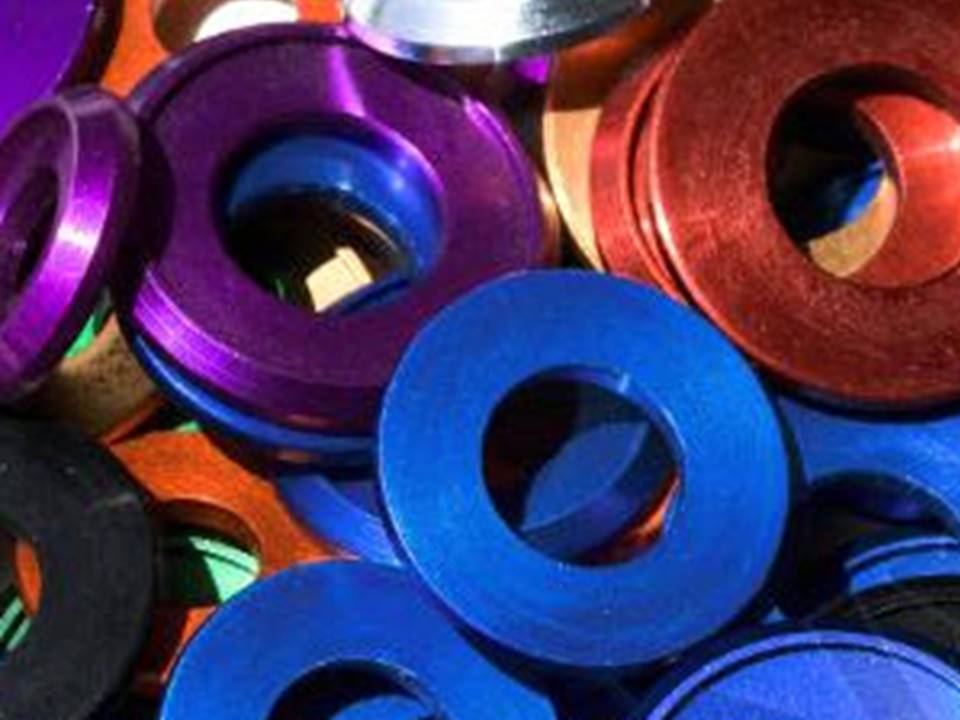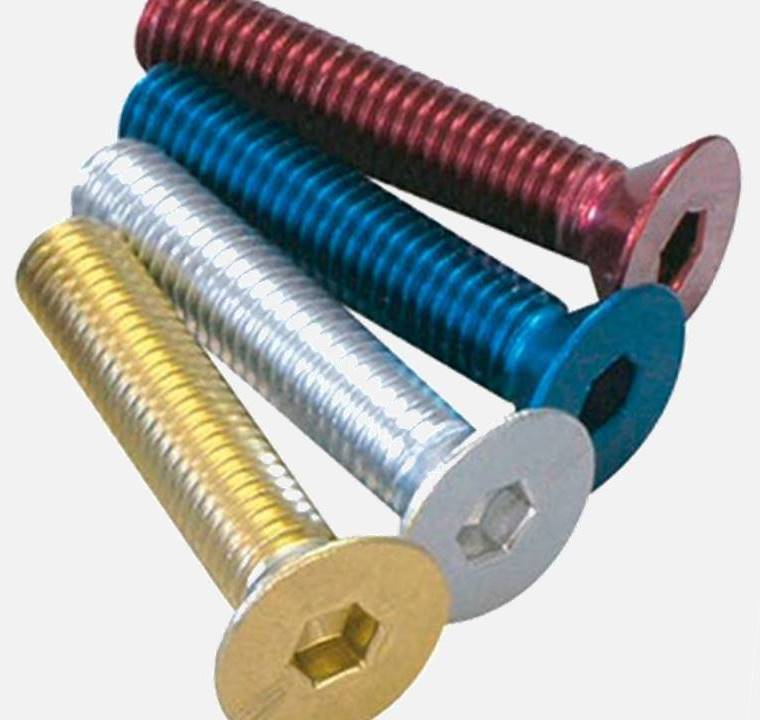Anodised Fasteners
Anodising Anodizing
Anodising (UK) anodizing (USA) is an electrolytic passivation process used to increase the thickness of the natural oxide layer on the surface of metal parts.
The process is called anodising because the part to be treated forms the anode electrode of an electrical circuit. Anodising increases corrosion resistance and wear resistance and provides better adhesion for paint primers. Anodic films can also be used for a number of cosmetic effects, either with thick porous coatings that can absorb dyes or with thin transparent coatings that add interference effects to reflected light.
Anodising is also used to prevent galling of threaded components. Anodic films are most commonly applied to protect Aluminium alloys.
Ferrous metals are commonly anodized electrolytically in nitric acid or by treatment with red fuming nitric acid, to form a hard black ferric oxide.


Anodized Hex Bolts
Anodised fasteners have their microscopic surface texture changed by the process that also changes the crystal structure of the metal near the surface. Thick coatings are normally porous, a sealing process is often needed to achieve corrosion resistance. Anodised aluminium surfaces are harder than aluminium but have low to moderate wear resistance that can be improved with increasing thickness or by applying suitable sealing substances. Anodic films are generally much stronger and more adherent than most types of paint and metal plating, but also more brittle. This makes them less likely to crack and peel from ageing and wear, but more susceptible to cracking from thermal stress.



